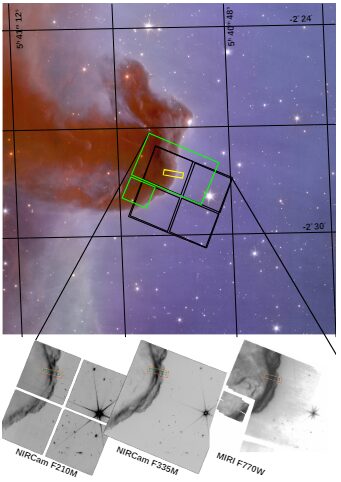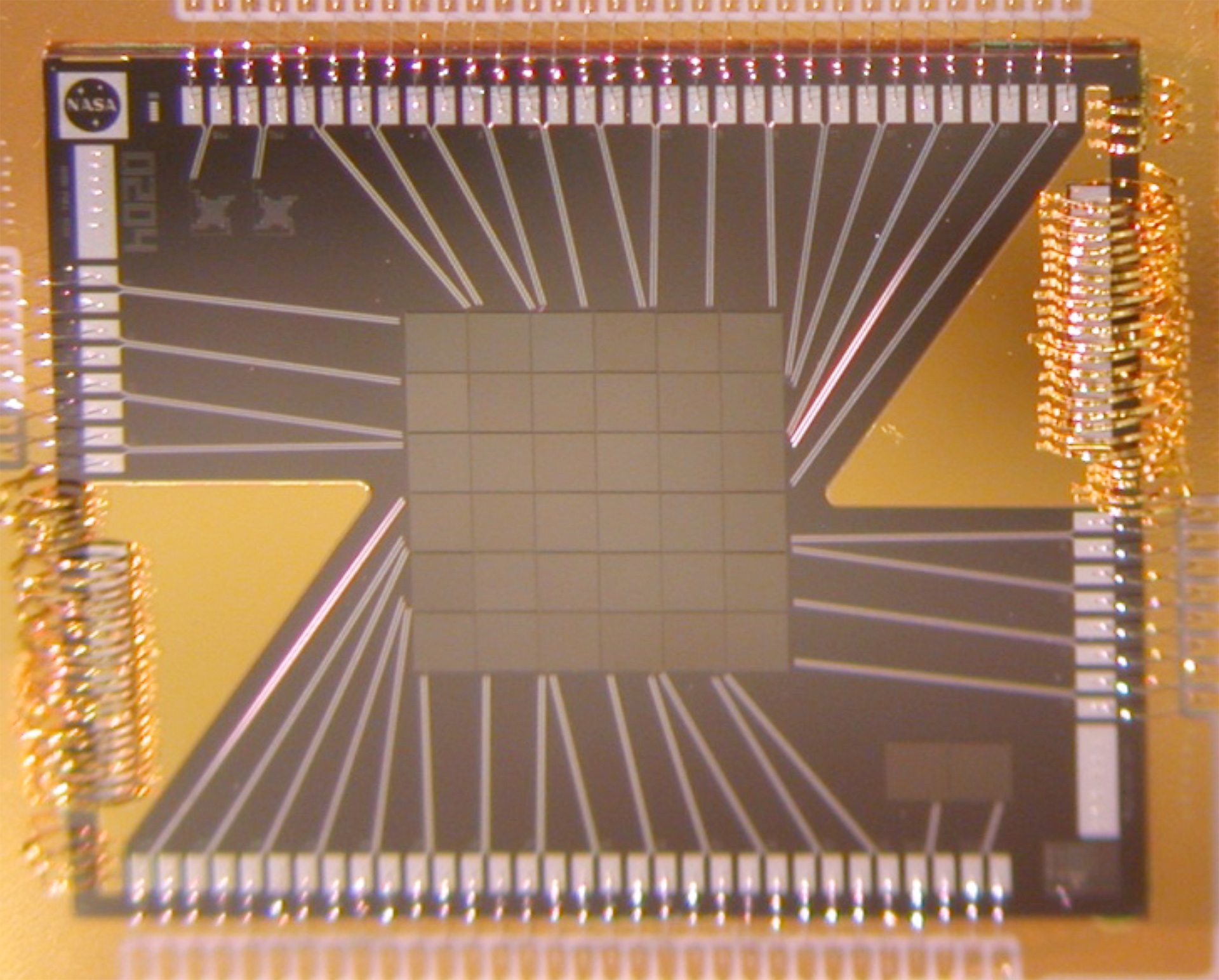2024-04-30 NASA
<関連情報>
- https://science.nasa.gov/missions/webb/webb-captures-top-of-iconic-horsehead-nebula-in-unprecedented-detail/
- https://arxiv.org/pdf/2404.15816
JWSTによるホースヘッド光子支配領域の観測 I. マルチバンド近・中間赤外線撮像による最初の結果 JWST observations of the Horsehead photon-dominated region I. First results from multi-band near- and mid-infrared imaging
A. Abergel, K. Misselt, K.D. Gordon, A. Noriega-Crespo, P. Guillard, D. Van De Putte, A.N. Witt, N. Ysard, M. Baes, H. Beuther, P. Bouchet, B.R. Brandl, M. Elyajouri, O. Kannavou, S. Kendrew, P. Klassen, and B. Trahin
Astronomy & Astrophysics Accepted: 10 April 2024

ABSTRACT
Context. The James Webb Space Telescope (JWST) has captured the sharpest infrared images ever taken of the Horsehead nebula, a prototypical moderately irradiated photon-dominated region (PDR) that is fully representative of most of the UV-illuminated molecular gas in the Milky Way and star-forming galaxies.
Aims. We investigate the impact of far-ultraviolet (FUV) radiation emitted by a massive star on the edge of a molecular cloud in terms of photoevaporation, ionization, dissociation, H2 excitation, and dust heating. We also aim to constrain the structure of the edge of the PDR and its illumination conditions.
Methods. We used NIRCam and MIRI to obtain 17 broadband and 6 narrowband maps of the illuminated edge of the Horsehead across a wide spectral range from 0.7 to 28 µm. We mapped the dust emission, including the aromatic and aliphatic infrared (IR) bands, scattered light, and several gas phase lines (e.g., Paα, Brα, H2 1-0 S(1) at 2.12 µm). For our analysis, we also associated two HST-WFC3 maps at 1.1 and 1.6 µm, along with HST-STIS spectroscopic observations of the Hα line.
Results. We probed the structure of the edge of the Horsehead and resolved its spatial complexity with an angular resolution of 0.1 to 1′′ (equivalent to 2 × 10−4 to 2 × 10−3 pc or 40 to 400 au at the distance of 400 pc). We detected a network of faint striated features extending perpendicularly to the PDR front into the H II region in NIRCam and MIRI filters sensitive to nano-grain emission, as well as in the HST filter at 1.1 µm, which traces light scattered by larger grains. This may indeed figure as the first detection of the entrainment of dust particles in the evaporative flow. The filamentary structure of the 1-0 S(1) line of H2 at the illuminated edge of the PDR presents numerous sharp sub-structures on scales as small as 1.5′′. An excess of H2 emission compared to dust emission is found all along the edge, in a narrow layer (width around 1′′, corresponding to 2 × 10−3 pc or 400 au) directly illuminated by σ-Orionis. The ionization front and the dissociation front appear at distances 1 − 2 ′′ behind the external edge of the PDR and seem to spatially coincide, indicating a very small thickness of the neutral atomic layer (below 100 au). All broadband maps present strong color variations between the illuminated edge and the internal regions. This can be explained by dust attenuation in a scenario where the illuminating star σ-Orionis is slightly inclined compared to the plane of the sky, so that the Horsehead is illuminated from behind at an oblique angle. The deviations from predictions of the measured emissions in the Hα, Paα, and Brα lines also indicate dust attenuation. With a very simple model, we used the data to derive the main spectral features of the extinction curve. A small excess of extinction at 3 µm may be attributed to icy H2O mantles onto grains formed in dense regions. We also derived attenuation profiles from 0.7 to 25 µm across the PDR. In all lines of sight crossing the inner regions of the Horsehead, especially around the IR peak position, it appears that dust attenuation is non-negligible over the entire spectral range of the JWST.



